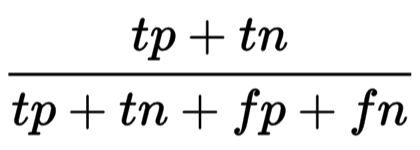Wie gut ist dein Modell?
Überwachtes Lernen mit scikit-learn

George Boorman
Core Curriculum Manager, DataCamp
Kennzahlen bei der Klassifikation
Bewertung der Leistung eines Modells anhand der Korrektklassifikationsrate:
Anteil korrekt klassifizierter Daten
Nicht immer eine nützliche Kennzahl
Klassenungleichgewicht
Klassifikation zur Vorhersage betrügerischer Banktransaktionen
- 99 % der Transaktionen sind legitim, 1 % sind betrügerisch
Szenario: ein Klassifikator sagt vorher, dass ALLE Transaktionen legitim sind
Korrektklassifikationsrate von 99 %
Aber ungeeignet zur Vorhersage betrügerischer Transaktionen
Verfehlt seinen ursprünglichen Zweck
Klassenungleichgewicht: ungleichmäßige Häufigkeit der Klassen
Alternative Methode zur Leistungsbewertung nötig
Konfusionsmatrix zur Bewertung der Klassifikationsleistung
- Konfusionsmatrix

Bewertung der Klassifikationsleistung

Bewertung der Klassifikationsleistung

Bewertung der Klassifikationsleistung

Bewertung der Klassifikationsleistung

Bewertung der Klassifikationsleistung

Bewertung der Klassifikationsleistung

Bewertung der Klassifikationsleistung

Bewertung der Klassifikationsleistung

- Korrektklassifikationsrate („Accuracy“):

Genauigkeit

- Genauigkeit („Precision“):

- Hohe Genauigkeit = weniger falsche Positive
- Im Beispiel: nur wenige legitime Transaktionen werden als betrügerisch klassifiziert
Sensitivität

- Sensitivität („Recall“):

- Hohe Sensitivität = weniger falsche Negative
- Im Beispiel: die meisten betrügerischen Transaktionen werden korrekt klassifiziert
F-Maß
- F-Maß: $2 * \frac{precision \ * \ recall}{precision \ + \ recall}$
Konfusionsmatrix in scikit-learn
from sklearn.metrics import classification_report, confusion_matrixknn = KNeighborsClassifier(n_neighbors=7)X_train, X_test, y_train, y_test = train_test_split(X, y, test_size=0.4, random_state=42)knn.fit(X_train, y_train)y_pred = knn.predict(X_test)
Konfusionsmatrix in scikit-learn
print(confusion_matrix(y_test, y_pred))
[[1106 11]
[ 183 34]]
Klassifikationsbericht in scikit-learn
print(classification_report(y_test, y_pred))
precision recall f1-score support
0 0.86 0.99 0.92 1117
1 0.76 0.16 0.26 217
accuracy 0.85 1334
macro avg 0.81 0.57 0.59 1334
weighted avg 0.84 0.85 0.81 1334
Lass uns üben!
Überwachtes Lernen mit scikit-learn

